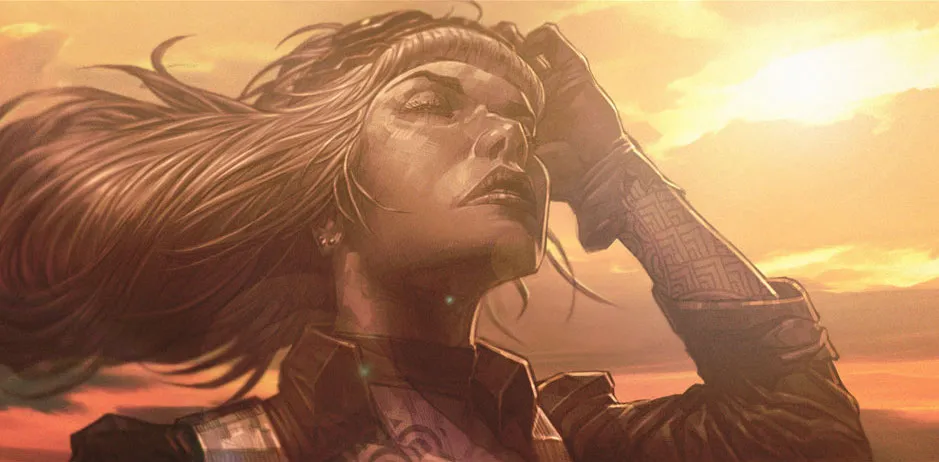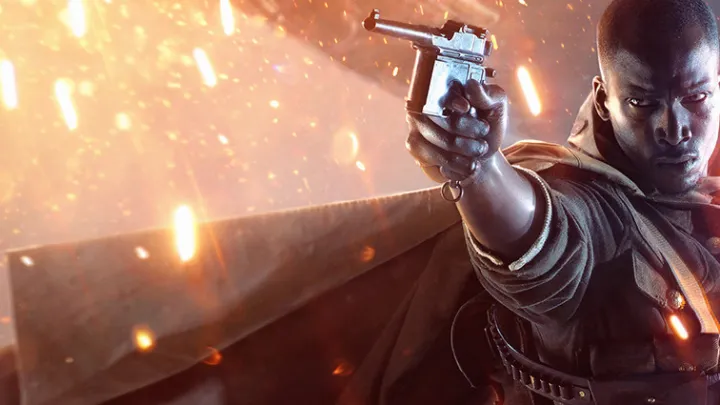Get to Know Gnomon Workshop Instructor, Rembert Montald

 Rembert Montald’s art is stunning. Whether it’s a lone cowboy and his canine contemplating a moonlit mesa or a quick sketch of a woman pirouetting below billowing sheets, Rembert’s imagery exudes an effortless warmth and humanity. Given this talent, it’s no surprise that Rembert is currently working as an artist at one of the world’s leading video game developers and creative companies, Riot Games. As Storyboard Artist, Rembert brings his elegant individualism to even the most simple sketches, which inform cinematics viewed by millions worldwide.
Rembert Montald’s art is stunning. Whether it’s a lone cowboy and his canine contemplating a moonlit mesa or a quick sketch of a woman pirouetting below billowing sheets, Rembert’s imagery exudes an effortless warmth and humanity. Given this talent, it’s no surprise that Rembert is currently working as an artist at one of the world’s leading video game developers and creative companies, Riot Games. As Storyboard Artist, Rembert brings his elegant individualism to even the most simple sketches, which inform cinematics viewed by millions worldwide.
Below, The Gnomon Workshop speaks with Rembert about how he first discovered his passion for art and how he’s carefully honed his skill set over the years. Rembert reveals how others can look to develop their artistic craft and career, and how they can learn in a few hours what took Rembert years with his two-part Gnomon Workshop tutorials. (Soon to be three!)
The Gnomon Workshop: Can you tell us how you first got involved with the world of art?
Rembert Montald: My family was always involved in art. My grandmother studied art history, and my other grandmother had an art gallery where both my mother and aunt worked. My grandparents’ house was always filled with original art by my great-great-uncle, Constant Montald. He was a famous Belgian painter from the 19th Century art movement called Symbolism, and his academic student works were always on the walls. All of this, together with my grandmother showing me classical art, got me hooked. Plus, I always had a lot of support from my parents.
TGW: Can you talk us through how your artistic career got started?
RM: At about nine years old I started drawing with adults in a small independent art academy in Holsbeek, Belgium, mainly doing still-life drawings. I took private airbrush lessons from Mistral Melike, a very accomplished fine artist. I also went to the De Wijnpers art school in Leuven from the ages of 12 – 18 years old. Between the ages of 15–20 years old, I got into learning jazz guitar and took it very seriously — I almost joined a music university! However, I ultimately opted for a university degree in animation at RITSC in Brussels. I still wrote all of the music for my student shorts with the band I was in at the time. In that way, animation allowed me to combine my love for music and visual art!
TGW: You’re now a Storyboard Artist at Riot Games. What do you do there daily, and how could others land a similar role as yourself?
RM: My day-to-day is very varied. I do everything in my role at Riot: I draw storybeats and storyboards and make animatics; I paint concepts and design characters for shorts; I overpaint images for the final look.
As for landing a role, many artists nowadays would advise you to specialize and narrow your focus to a specific part of production. I find this absurd — it amputates you artistically. Given the variety of my role, I would suggest the opposite: Learn as much as you can from as many mediums and art forms as possible. Learn to paint; learn to draw. Try animation. Pick up oil painting, airbrush, pastels, watercolors, digital. Try to combine them. See what a medium can teach you. Try storyboarding for practicing compositions. Try making a walk cycle for figure-drawing practice.
Personally, I like exploring a lot of styles and methods. Doing the same thing for years can destroy your personal style and lead to burnout. With that in mind, also remember to practice smart, not practice hard. It’s important to take a rest. Sometimes I don’t draw for a week, and it really helps: when I pick up the pencil again, it feels fresh.
TGW: What qualities make for a great storyboard artist?
RM: This is a difficult question to answer. Storyboard artists all have different styles and workflow, and there is no wrong or right. Personal style and experience/background are what make a storyboard artist, and that varies for everyone. So, it’s hard to give a satisfying answer here, but that’s part of the reason why I love storyboarding.
I can say that understanding a project or person’s vision is important, so you need to be able to communicate with directors, producers, and your colleagues. Every new short is a puzzle to solve; you must work closely with others to solve it!
TGW: What educational resources have helped you hone your storyboard/concept art over the years that you would recommend to other artists?
RM: Get a private teacher. I’m lucky to have had several mentors. I would have never learned to draw the way I do now if it wasn’t for my friend, David Alvarez Mena, who decided to teach me anatomy or get to where I am in terms of storyboarding without the help of Ryan Woodward. I’m also thankful to Ryan for giving me a start in this industry.
I met all of these people and received these opportunities by going to events. I suggest going to events, sticking your neck out, and befriending other artists. If you’re applying to a job position at a big company through the site, there’s a chance they won’t notice you; companies often hire connections of people that already work in the company. So get some connections!
TGW: What are some of your favorite artworks that you’ve created over the years, and why?
RM: Painting-wise. I always liked the painting I did of a little girl on a bridge many years ago. There is something intimate about small compositions like that, which I enjoy; they leave room for mystery and interpretation. 
TGW: Could you describe the two tutorials you recently created for The Gnomon Workshop?
RM: I know it sounds cheesy, but I’m serious about this: I’m so proud of the work I’ve put into “Creating Beatboards for Pre-Production” and “Storyboarding Techniques: Creating a Fight Sequence.” I injected these several hours of tutorial material with my many years of experience, covering everything from how to draw constructively to animating entire fight sequences. I wish I’d had access to these tutorials myself many years ago; I would have experienced revelations about story development in an instant, which took me years to evolve.
I’m currently working on the third part of the series, and I can’t wait to get it out there!
TGW: What are some of your favorite things to draw, and why?
RM: Even though most of the things I draw are epic in proportion, I like painting simple things — things close to me, like my wife or the forest where I grew up.
I also like to draw children. Everything is so new for them. I find it freeing to explore the curious mindset of a child just discovering the world. I think an artist should maintain a similar perspective: be fascinated, even by the simplest things!
TGW: Finally, if you could go back in time and give your younger version one tip to help with your career, what would it be?
RM: Artistic-wise, nothing. Everything happens for a reason, and I’m grateful for the path that was.
Personality development wise? I’d tell myself: “Don’t be so naive!”






















